Marc Newson designed his Knoll task chair to last ‘forever’
The famed Australian designer Marc Newson has designed just about everything—from aircraft interiors, jetpacks, racing bikes, and Olympic uniforms to kitchen appliances, fountain pens, samurai swords, and Apple products.
Which is to say, it’s almost surprising that Newson has never designed a task chair, until now. His Newson Task Chair for Knoll will arrive later this summer for an undisclosed price.
The design is a sequel to the Newson Aluminum Chair, which he released in 2018 with Knoll. Its cantilevered frame design was a nod to the modernism of Mies van der Rohe. For his performance-oriented update, Newson wanted to preserve the chair’s floating effect and unique silhouette—all while imbuing the design with the ergonomic adjustments and supports of a task chair.
“It’s very difficult to express how technically complex and demanding task chairs are to design,” says Newson. “They simply have to do too many things.”
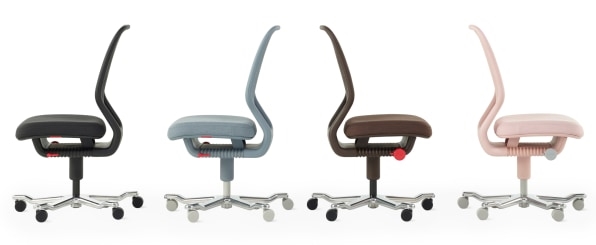
The tall challenge of task chairs
Task chairs must fit a wide variety of bodies for a true full day of work, rather than supporting you for a few handfuls of minutes while eating dinner. And the methods a task chair uses to do so are mostly mechanical. It uses polymers, plates, and springs to perfectly counterbalance hundreds of pounds of human weight in a variety of adjustable positions. It’s ostensibly the machinery of a grandfather clock crossed with the spongy performance of a sneaker.
Typically, the key mechanics of a task chair live right under the seat in a large box, which anchors the chair like an anvil. “They do what they need to do, but they’re big, in ways that won’t help enable you to create a unique piece,” explains Newson. “I wanted it to almost disappear into the structure of the chair itself.”
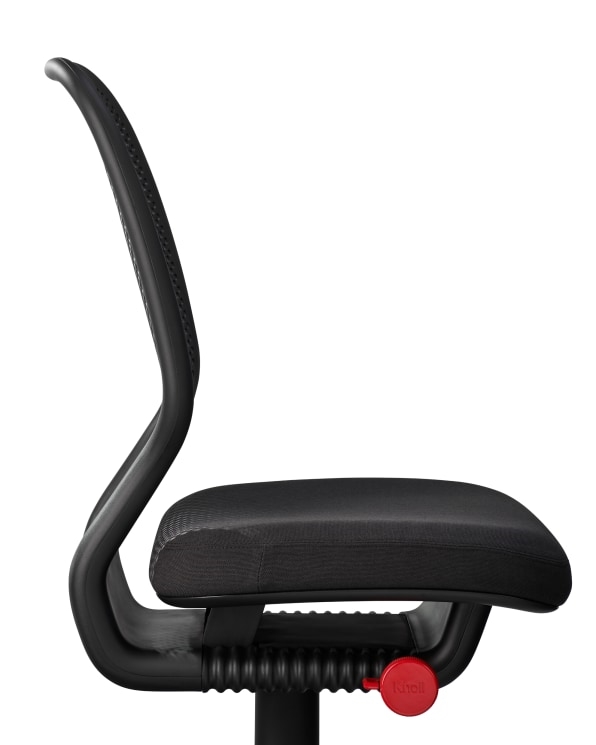
In turn, Newson spent five years working on his own under-seat mechanism with Knoll, called the T1 Control, which he wanted to cut through what he calls the “theatrical complexity” of many task chairs. Only 2 inches thick, it hides the mechanics under the seat—vertically rather than horizontally—within the chair frame to create the open-air effect. While that development took time, it’s precisely this small visual footprint that allowed Newson to preserve the weightless look of the chair.
“You end up with a product that I would suggest is more or less impossible to copy,” says Newson.
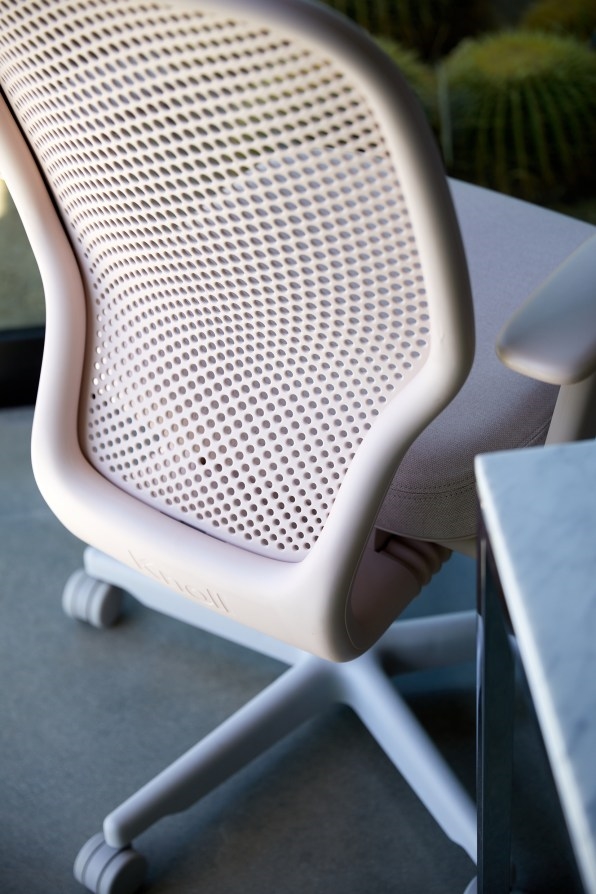
The other major innovation was the chair’s entire S-shape back panel. At first glance, it might look like your typical frame, covered in mesh fabric. In fact, it is one big component that was created in a single, incredibly complex injection mold. What your eye doesn’t realize is that it’s seeing 10 different materials, each with different performance attributes, all color-matched and formed together so that it appears to be a single cohesive structure.
Inside this structure lives a skeleton. That goes into a large mold, where it’s sandwiched inside a composite of the aforementioned polymers—nearly a dozen soft plastics of varying flexibility and softness.
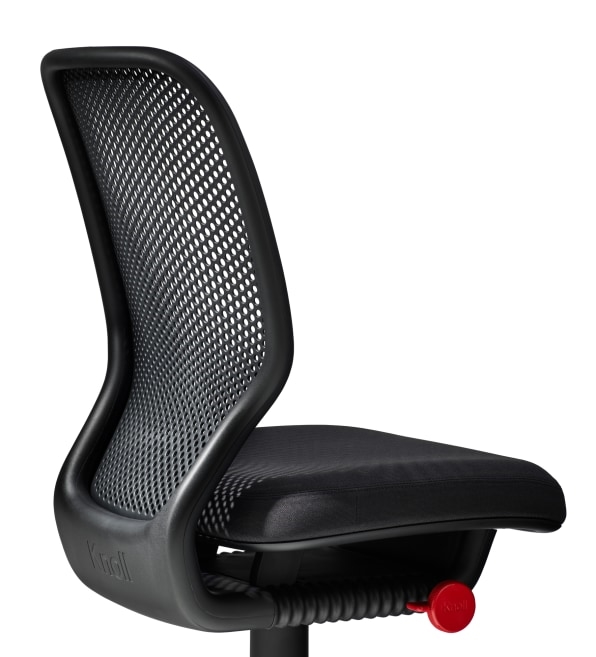
“It might sound slightly grandiose, but it’s a little like a human body, where you have bone, cartilage, and muscle—different densities of materials doing different things in different places, but they’re all connected to one another,” says Newson. “They can’t be disconnected in order to work. They’ve got to be integral to one another.”
The process of molding most of the chair as one big part sounds simple enough, but to actually coax liquid materials to take shape in such complex molds, at an industrial scale, is remarkably difficult. Each piece has to be “born perfectly,” in Newson’s words, and with so many composites and detailed shaping, a lot can go wrong.
“The thing not many people realize about the process is it’s very iterative. Just because it’s automated, and you’re using high-tech materials doesn’t make it scientific. It’s more alchemy than anything,” Newson explains. “It’s completely and utterly random and unpredictable. It’s literally trial and error. Which is bizarre, but oddly reassuring in an analog sense.”
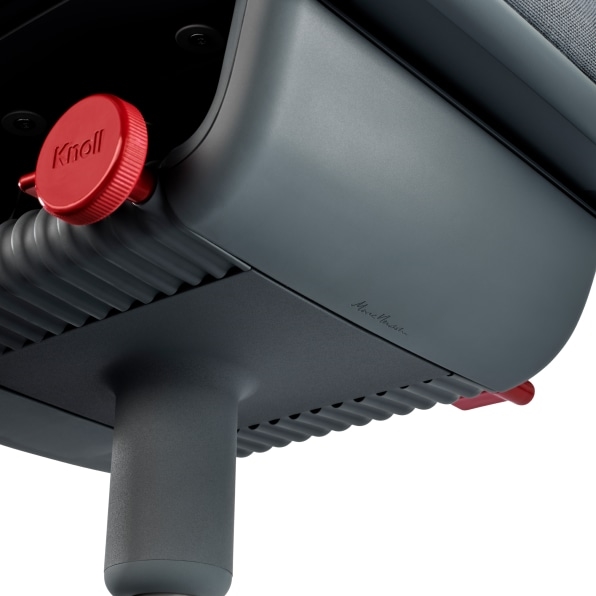
Toward the bottom of the S-frame, Newson broke his clean lines by adding a corrugated texture—what he calls a “glorified dust cover” for the T1 mechanism inside, designed to flex like a bendy straw as you tilt back. A single adjustment knob allows you to tweak the tension of the tilt while you push a lever on the opposite side of the seat to tilt forward or back. These controls are highlighted in eye-popping red. The round knob in particular is Newson’s response to the complex adjustments of many task chairs, which he says have been built to “advertise the investment” and “bamboozle” us through complicated nods to their ergonomics.
“[The knob] is not a nondescript, funky, biomorphic shape,” he says. “It’s a circle. So there’s absolutely no confusing what it’s supposed to do or how you’re supposed to interact with it. It ultimately comes back to simplicity, and just being honest about how you express certain functions, rather than trying to either hide them or cloak them in complexity.”
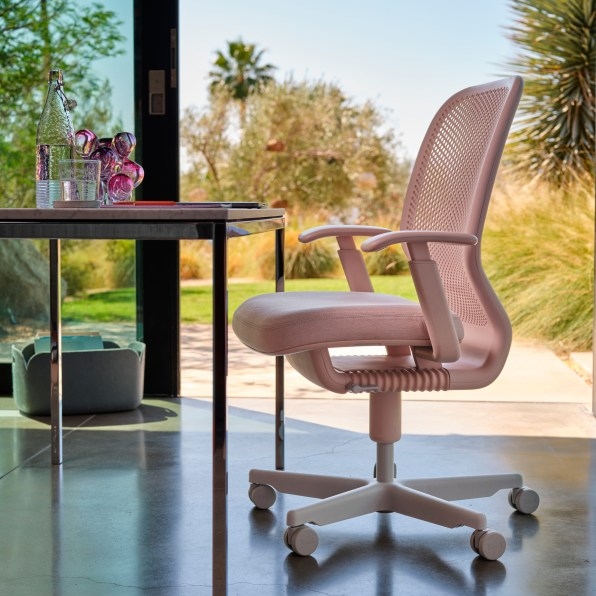
Prioritizing quality of life versus end of life
Several times through the course of our conversation, Newson mentions his larger goal behind the chair—to create “an icon,” or a task chair that challenged conventions enough that it would be a coveted object for years to come. He doesn’t use the word “immortality,” but it’s clear that’s the bar Newson is aiming for.
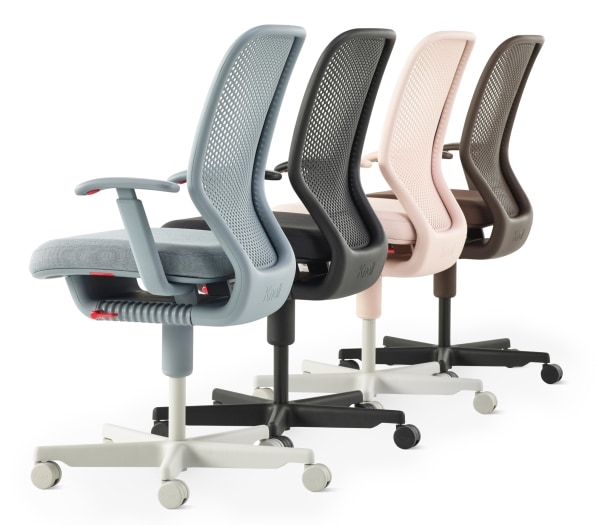
And yet, I was curious whether he’d considered what would happen to his product when a company or individual was done using it. While the chair does implement some recycled plastics, it’s not designed to be circular—to easily remelt into another product or biodegrade back into the Earth.
“It may sound like a cop-out in the end, but I ultimately believe—and this holds true to everything I’ve designed, really—that I don’t feel I’m in the business of designing landfill,” says Newson. “I love to design products which are repairable, they’re not disposable. And they’re qualitative: They last. I love the idea that you buy something once and you kind of keep it for the rest of your life.”
When I press, asking if it actually bothers him to think of the end of life of his products, he doesn’t hesitate.
“Yeah! I design things with the thought in mind that I’m buying it once and forever,” says Newson. “We’re creating bonds with objects we love on a personal level. You get to know how to use this thing, how it feels, and you start to become comfortable with it. And it becomes your favorite one of its kind.”
(23)


